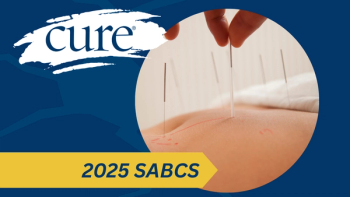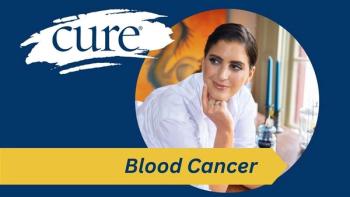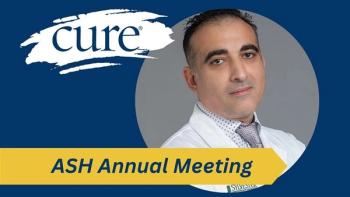
Treatment for Cancer's Twin Ailment: Financial Toxicity
The health care experts call it financial toxicity. I call it an agonizing, stress-inducing, horrifying choice between financial ruin and treatment of a life-threatening disease.
The health care experts call it financial toxicity. I call it an agonizing, stress-inducing, horrifying choice between financial ruin and treatment of a life-threatening disease. For the purposes of this article, I’m talking about the latest advancements in the fight against ovarian cancer, but financial toxicity covers a myriad of advancements in cancer treatment that come with astronomical price tags.
I’m taking a drug for maintenance treatment while I’m NED (no evidence of disease). Its role is to keep my cancer from progressing again. It’s been working for seven months. It’s also $14,164 for a one-month supply. Until July 1, I received co-pay assistance from the manufacturer for my share of the cost—about $3,000 a month.
Then I received a letter saying I’m now moving to Medicare because I’ve been on disability for two years. Thinking this was good news, I jumped into a whirlwind of preparation, notifying all my doctors and reviewing all my prescriptions for the transfer. Then the proverbially poo hit the fan. I learned about doughnut holes and catastrophic categories. Under my Aetna Medicare “advantage” plan, my share of this drug is $3,088 for the first month and $708.20 every month thereafter. In January, the costs start over, another $3,088. No out-of-pocket cap exists. Worse, Medicare recipients by law are not eligible for co-pay assistance.
It boggles the mind that our most vulnerable and fragile citizens who’ve paid into the retirement system their entire lives cannot benefit from these co-pay programs. I had a lengthy conversation—one of several—with a drug manufacturer’s representative who agreed the law makes no sense. But it makes it easy for the manufacturers to blame this assistance loophole on the federal government.
This isn’t one patient’s story. It’s happening over and over again all across this country every day for all kinds of cancer and other chronic life-threatening diseases. Cancer patients aren’t filling prescriptions because of the costs. Some aren’t taken as much as prescribed in order to make the drug last. Medicare patients are choosing between buying groceries or filling prescriptions. Grandmothers are agonizing over whether to pay the electric bill and heat their homes or fill prescriptions.
Like most laypeople, I couldn’t understand the situation I was facing, so I scoured the internet looking for answers. It’s called the “anti-kickback statute” making it illegal for companies to pay patients’ Medicare co-pays because it encourages them to use more expensive drugs instead of the generic drug or less-costly drugs that accomplish the same thing. Lawmakers argued the cost was being passed on to taxpayers. (Never mind that I’m one of those taxpayers and I’ve paid for that benefit since I started working in the school cafeteria when I was 15 years old.)
The problem is there are no generic drugs to substitute for the drug I am currently taking.
None of this would matter if drug companies weren’t charging exorbitant amounts for these drugs heralded as major breakthroughs in the fight against the number one gynecological cancer killer of women. The annual cost of the agent, according to my insurer, is $168,000.
Drug manufacturers say the cost of research and development of these new drugs, years of clinical trials and an arduous approval process account for these outrageous prices.
I say what’s the point if patients can’t afford them? We see these wonderful stories on the six o’clock news about breakthroughs, only to discover we can’t afford them without eventually entering bankruptcy. Bankruptcy is becoming more and more common and with it, depression and a high rate of morbidity for those patients.
Yes, there is a program to help uninsured, underinsured and low-income folks. Thank God.
But I don’t know any middle-class folks who can sustain these payments for an extended period of time. People will look at me and say (or at least think) “you’re not poor.” We aren’t. I worked 22 years for municipal government to earn a decent pension. Then I was diagnosed with two life-threatening diseases within six weeks of each other. I was forced to retire. My husband scrupulously manages our income each month, so he can put money away in hopes of someday retiring as well.
As I write this, I’m preparing to have a discussion this week with my oncologist about what my other treatment options will be. What treatment was used before the current new options became available? We can’t sustain these payments along with all the other prescriptions, doctor’s visits, CT scans, PET scans, lab work and multitude of medical costs I’ll incur throughout the year. No one could.
We must call on drug manufacturers to recognize that they can’t recoup their costs on the backs of patients. Imagine what it will be like when the cure for a particular type of cancer is found and only the wealthy will be able to afford it. Will we choose financial ruin to be cured? It’s a conversation we’re having now. We’ll continue to have it with each new breakthrough. Something has to give.
I don’t want to sink into that quagmire discussion of how insurance should work in these cases, but a conversation must be had regarding the moral imperative to make life-giving drugs available to all—not just those who can afford them. Not only a conversation, but action. We’re willing to pay our fair share. The question is, how much is that?





